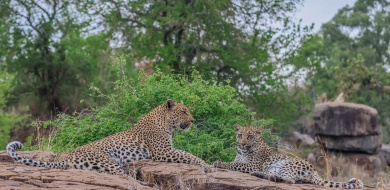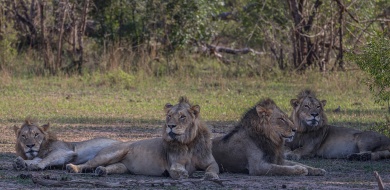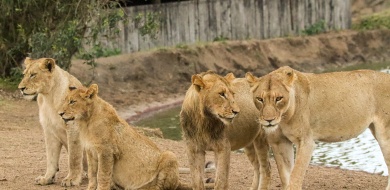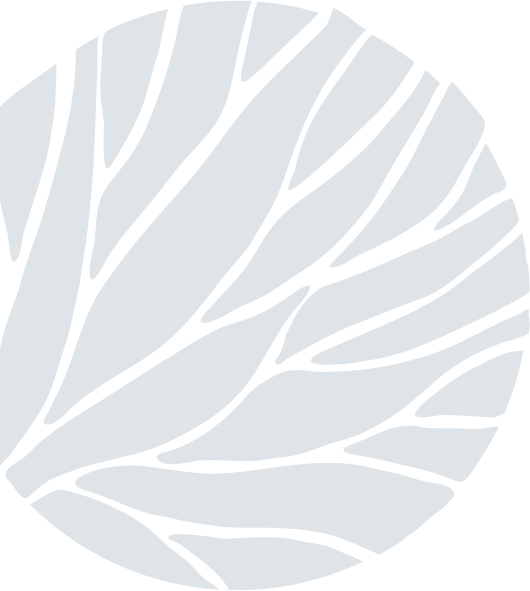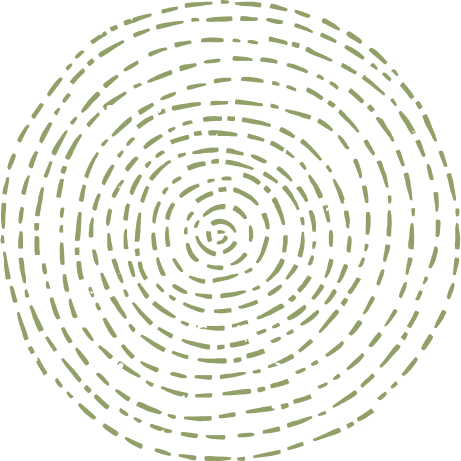Flowers Of Sabi Sabi
on Dec 20, 2022With the arrival of summer, the change in season brings with it rains, longer days and warmer temperatures stimulating growth from where there was just dust days ago. Flowers appear in different shapes colours and fragrances.
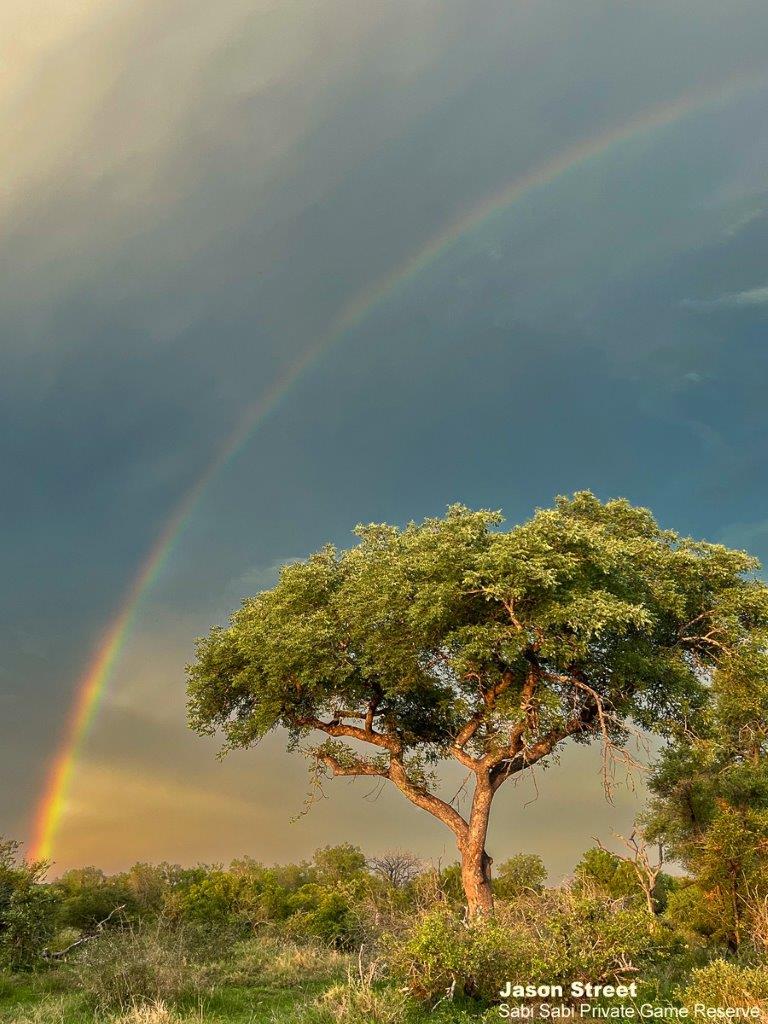
The flowers’ main purpose is to attract pollinators that will brush up against the pollen carried by the anthers and transfer it to the stigma so fertilisation can occur and fruit can be produced. The fruit will contain seeds that will need to be dispersed by a variety of mechanisms for the next generation of plant to grow. Flowers attract pollinators in the form of insects, mammals and birds using brightly coloured petals and attractive smells. Different scents attract different pollinators, sweet and perfumed scents will attract bees and butterflies while some like carrion plants have the smell of rotting meat to attract flies. Other plants are pollinated by winds which blow pollen, these will be dull coloured with little to no smell. Let's have a look at just a few of the common flowers that occur at Sabi Sabi.
Morning Glory (Ipomoea crassipes)
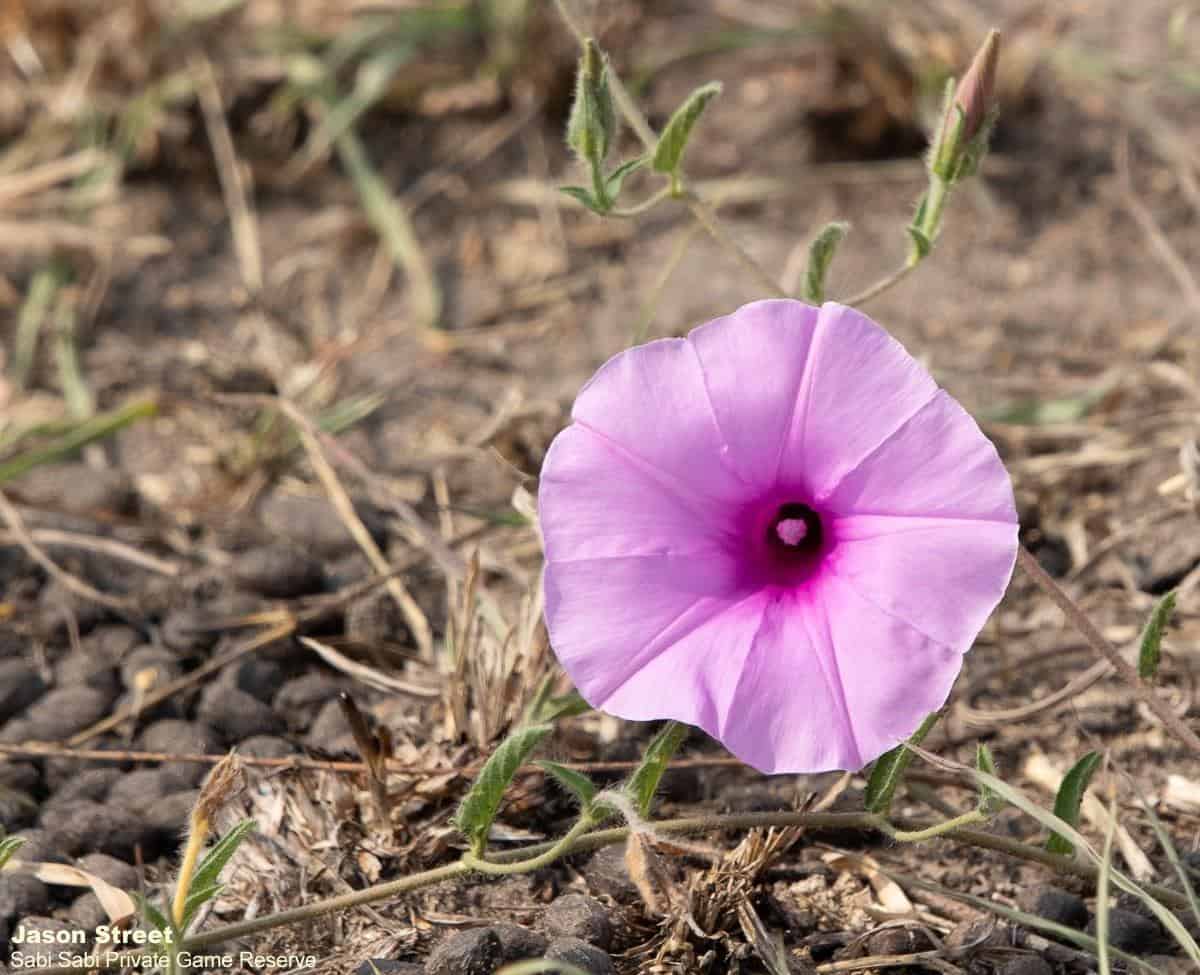
The Morning Glory flower is one of the more common flowers found at Sabi Sabi. As the name suggests, most Morning Glory flowers unfurl into full bloom as the sun rises in the east each morning. These flowers are edible; however, care needs to be taken not to eat the seeds which are thought to consist of hallucinogenic compounds.
Barberton Daisy (Gerbera jamesonii)
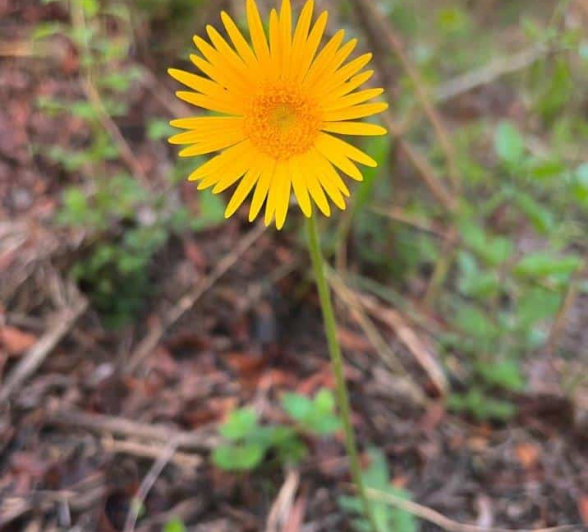
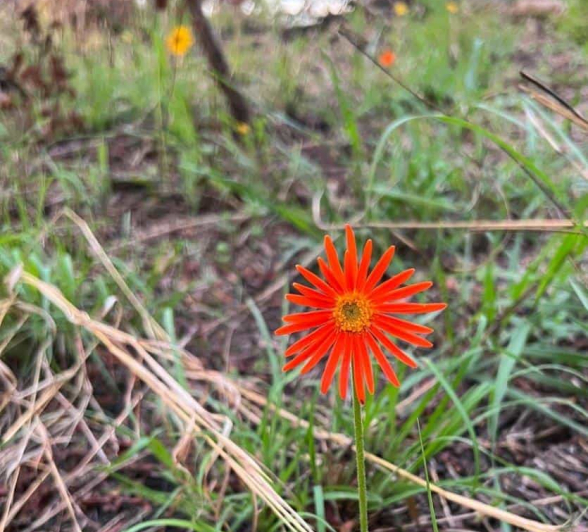
This small daisy’s rosette has irregularly shaped leaves which are deeply divided. The Barberton Daisy was named after its discoverer, Robert Jameson. He discovered this flower in a small town called Barberton in the Mpumalanga province of South Africa. The Barberton Daisy is said to be the most cut flower on earth for floral arrangements.
Fireball Lilly (Scadoxus multifloras)
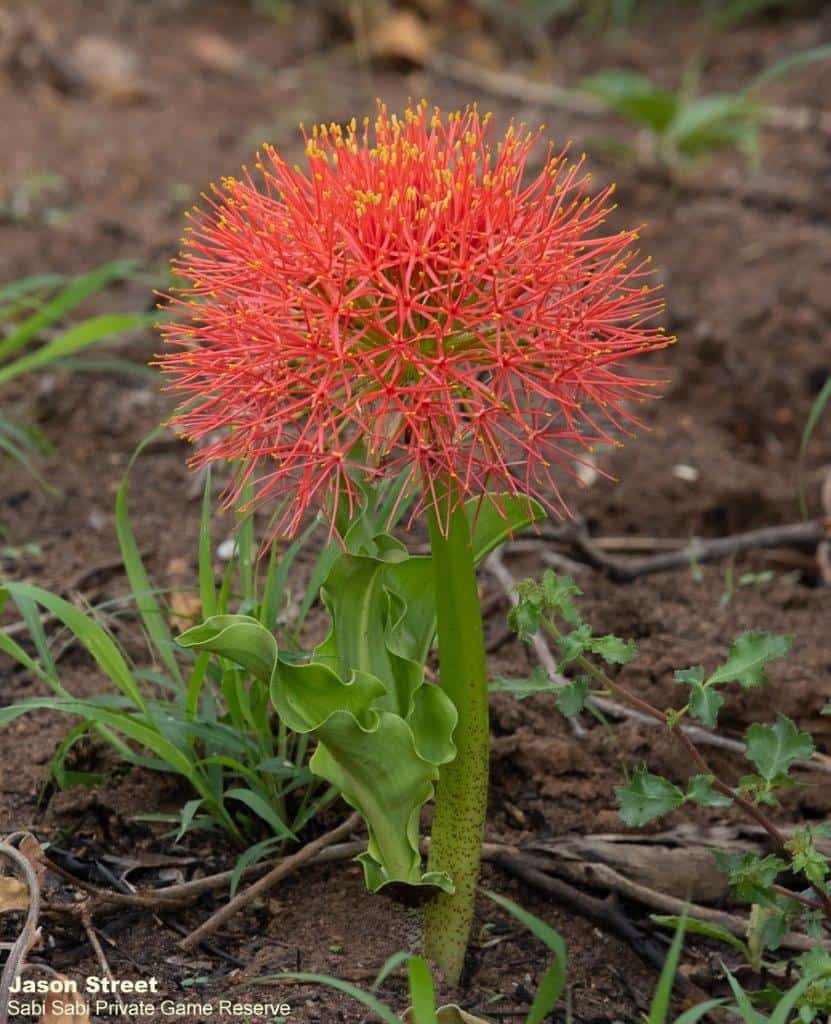
Also known as the Blood Lilly, this is a magnificent flower. It can grow up too 500mm in height and the inflorescence can have a diameter of 150mm. This plant is highly toxic and has been traditionally used in medicines as well as poison for arrows and fish.
Blue Commelina (Commelina erecta)
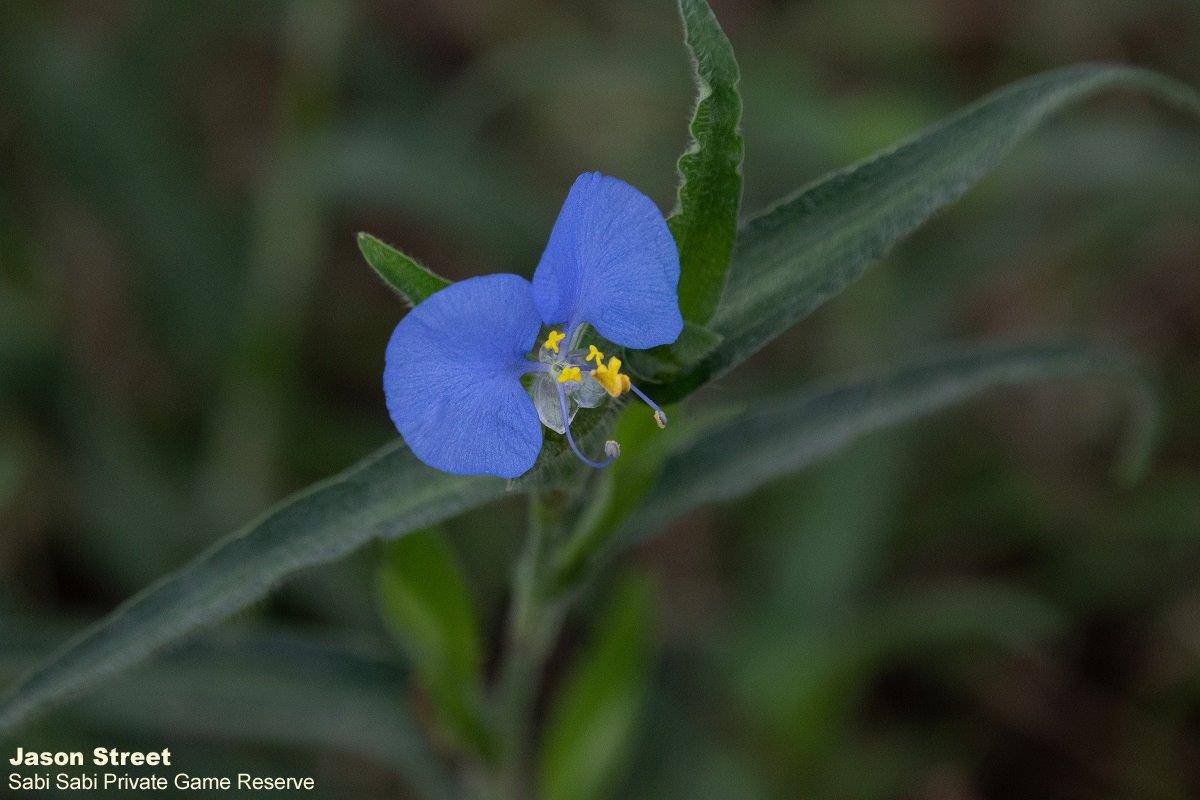
The Blue Commelina grows well in sandy soils during our rainy season. They are believed to have many uses from poultice, to reducing high blood pressure. They hold drops of a viscous liquid that is used for burns, sore throat, eye drops, dysentery, and leprosy in many different cultures.
Lion's Eye (Tricliceras lacerata)
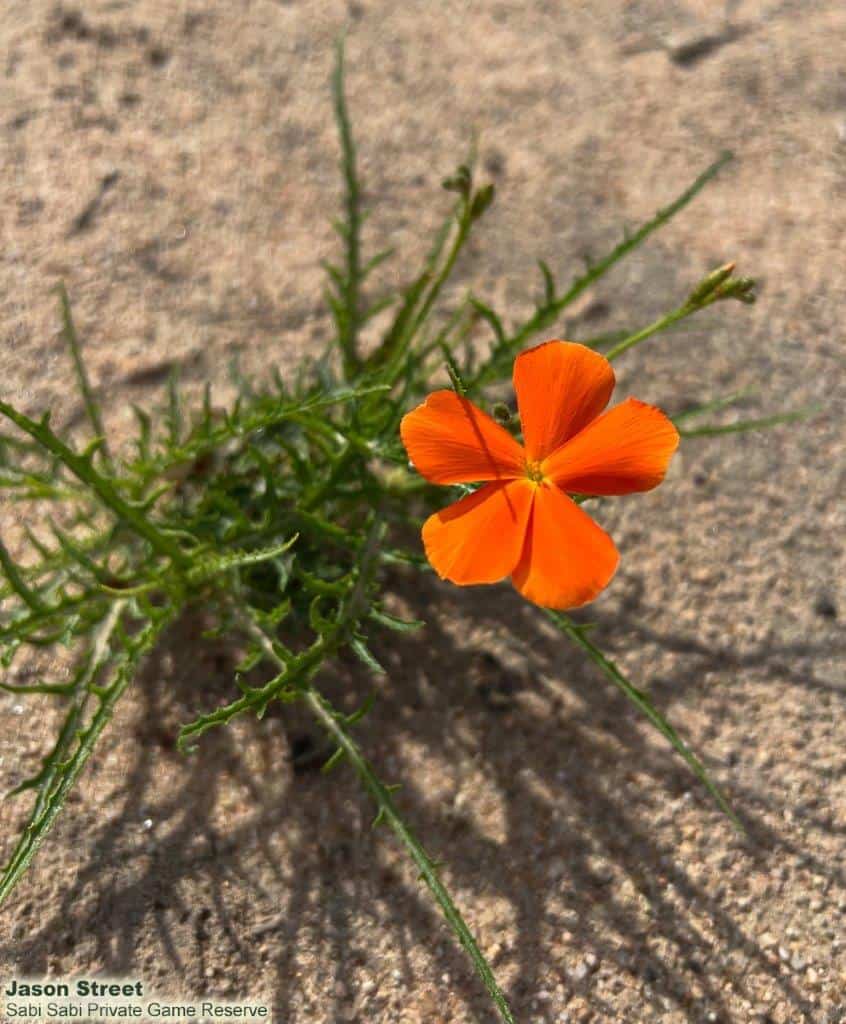
The Lion’s Eye is hard to miss with its striking orange colour. They appear in disturbed soils and appear as soon as the first rains fall and can be seen throughout the summer months.
Grass Lily (Chlorophytum bowkeri)
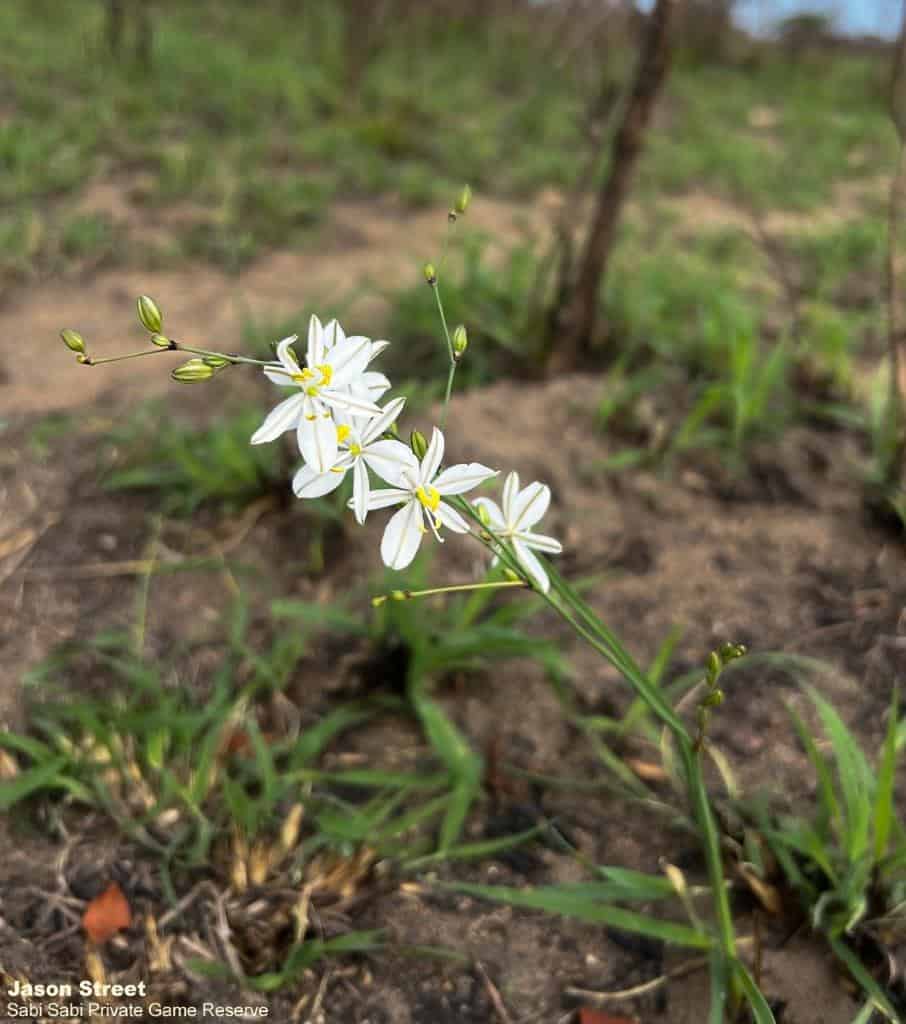
The name Chlorophytum is derived from the Greek word chloros, meaning “yellow/green” and phytom meaning plant, referring to the green leaves. This species was named after a South African Naturalist J.H. Bowker who sent a living plant to the Royal Botanical Gardens at Kew in England back in the 1800s. Its white, unscented flowers attract butterflies, bees and other small insects
Natal Blue Bell (Thunbergia natalensis)
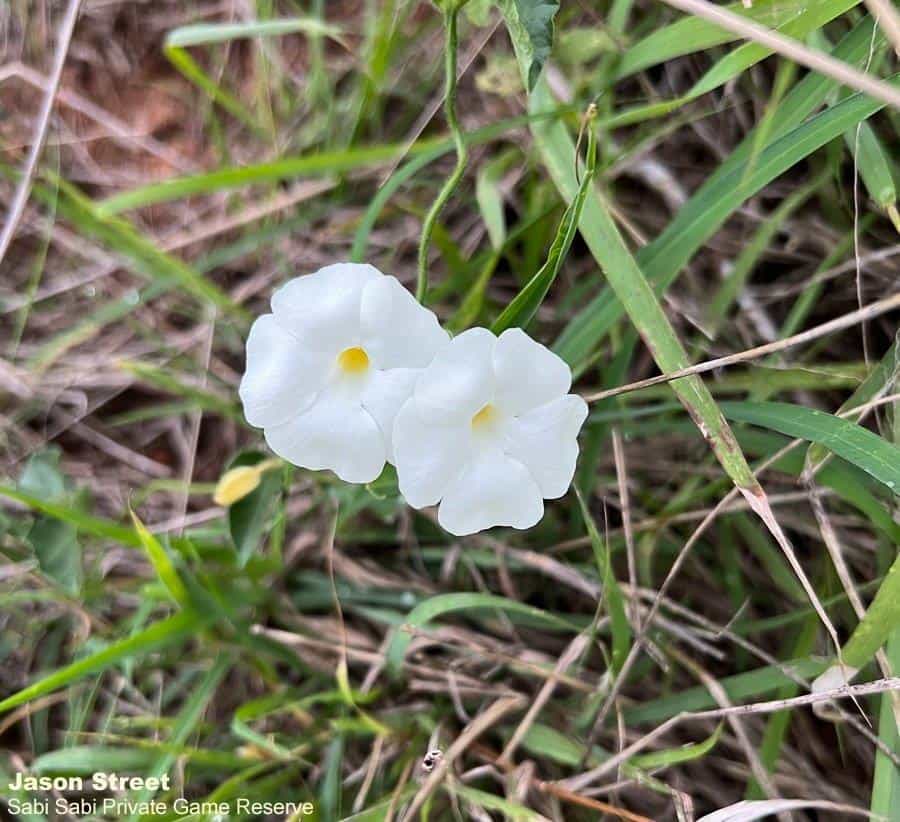
This genus is named in honour of Swedish Botanist Carl Thunberg who travelled as a doctor with the Dutch East Indian company ships and did extensive botanical exploration in Southern Africa. In Zulu culture it is believed that to ensure her marriage is a happy one, a Zulu bride may be given an infusion of the roots on her wedding day.
Poison Apple (Solanum panduriforme)
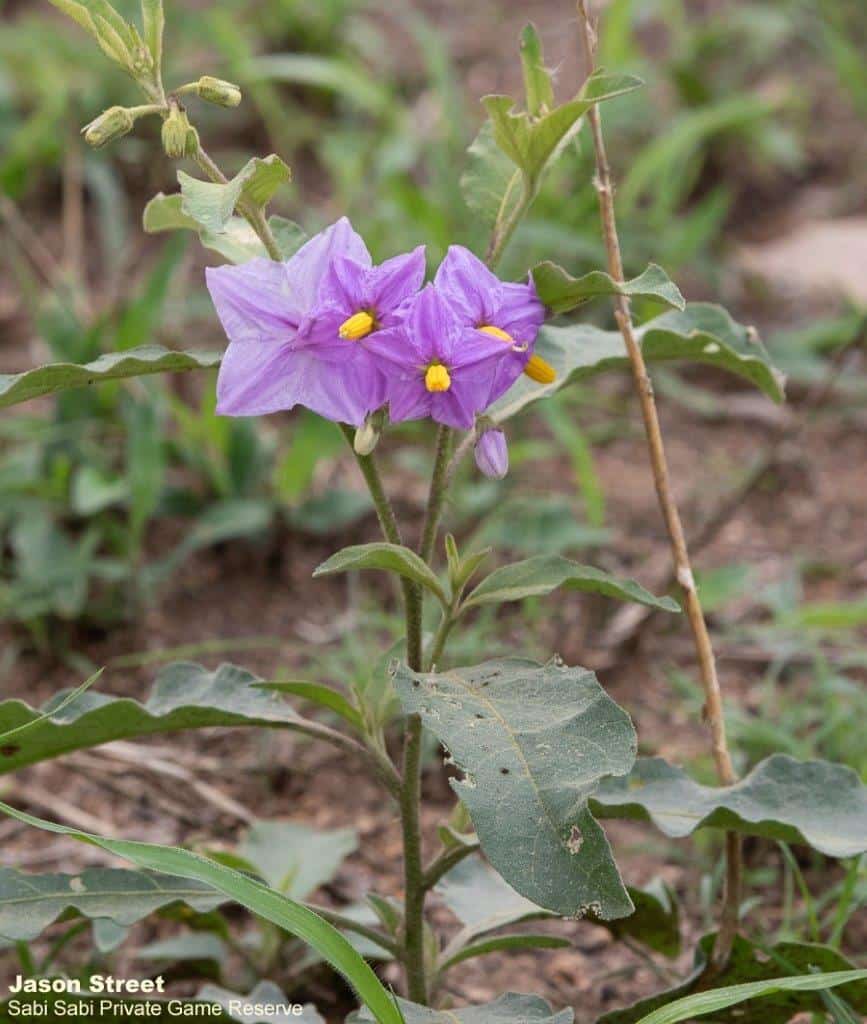
This is a bushy shrub that reaches up to 70cm high with a purple star shaped flower and a yellow marble sized fruit. The fruit is extremely toxic, and the consumption of the fruit can cause the stomach and intestines to swell, will induce convulsions, a coma and may ultimately prove fatal. Insects associated with this plant are the Death’s-head hawkmoth and the Small yellow-banded Acraea, which both feed on it.
Wild Hibiscus (Hibiscus engleri)
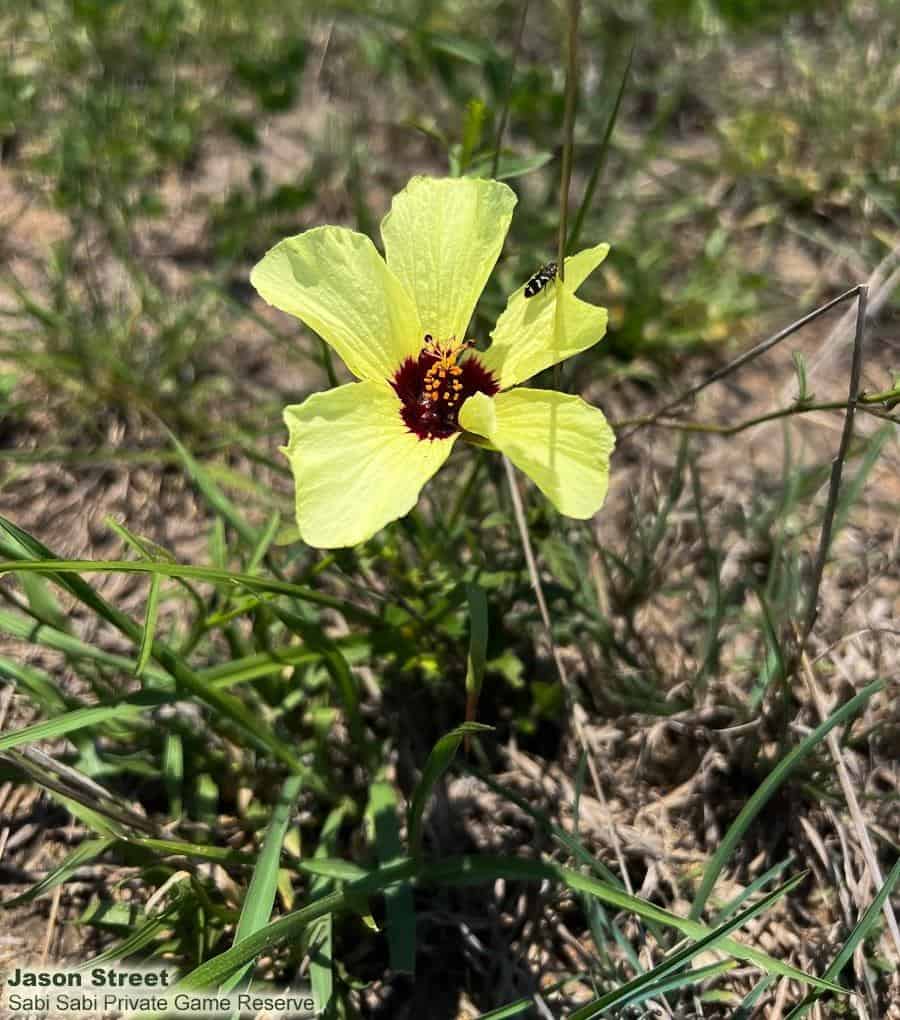
The Wild Hibiscus is one of several yellow-flowered Hibiscus species typified by 5 large petals. There are more than 50 species of Hibiscus in South Africa. Their bright colours attract a large array of insects including butterflies and bees, which in turn attract birds which feed on the insects.
String Of Stars (Heliotropium Nelsonii)
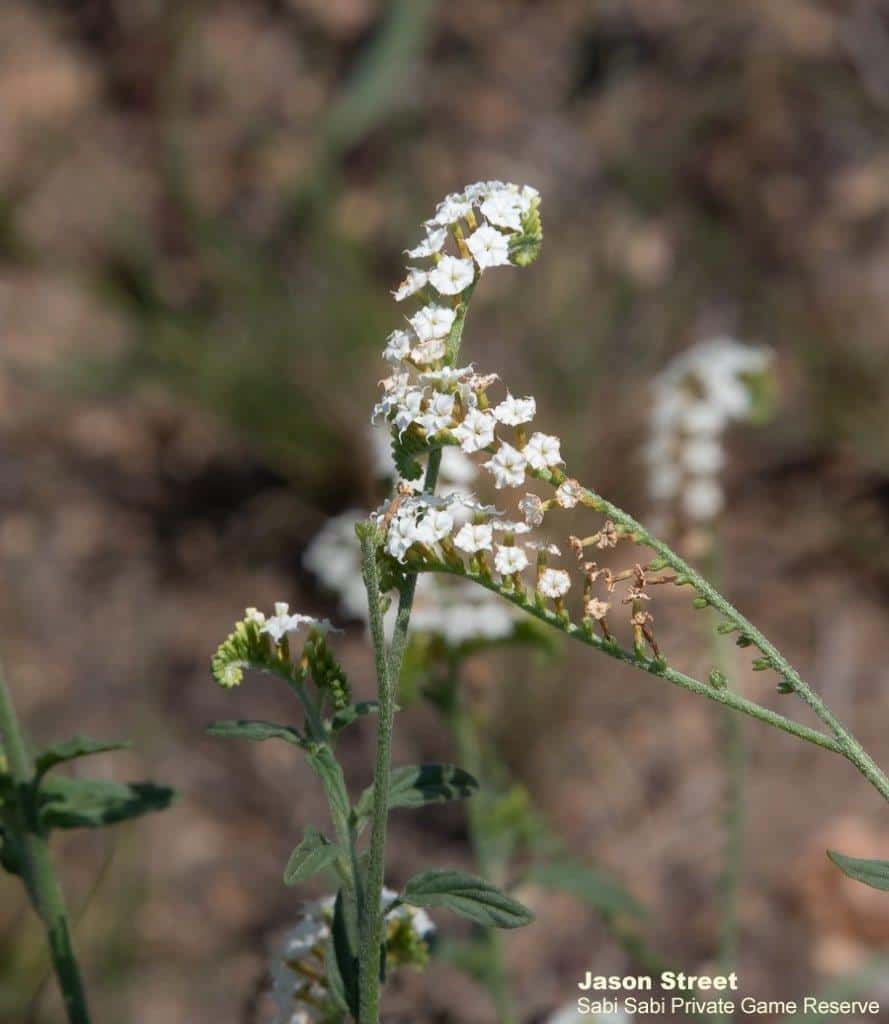
A beautiful, tiny, delicate, white flower that covers vast open crests. When driving through the emerald green landscape of early summer these flowers can look like an array of stars scattered along the plains. They contain an alkaloid toxin that the African Monarch Butterfly feeds on to synthesise courtship pheromones vital in incapacitating the female butterfly allowing him to mate.
Gladiolus
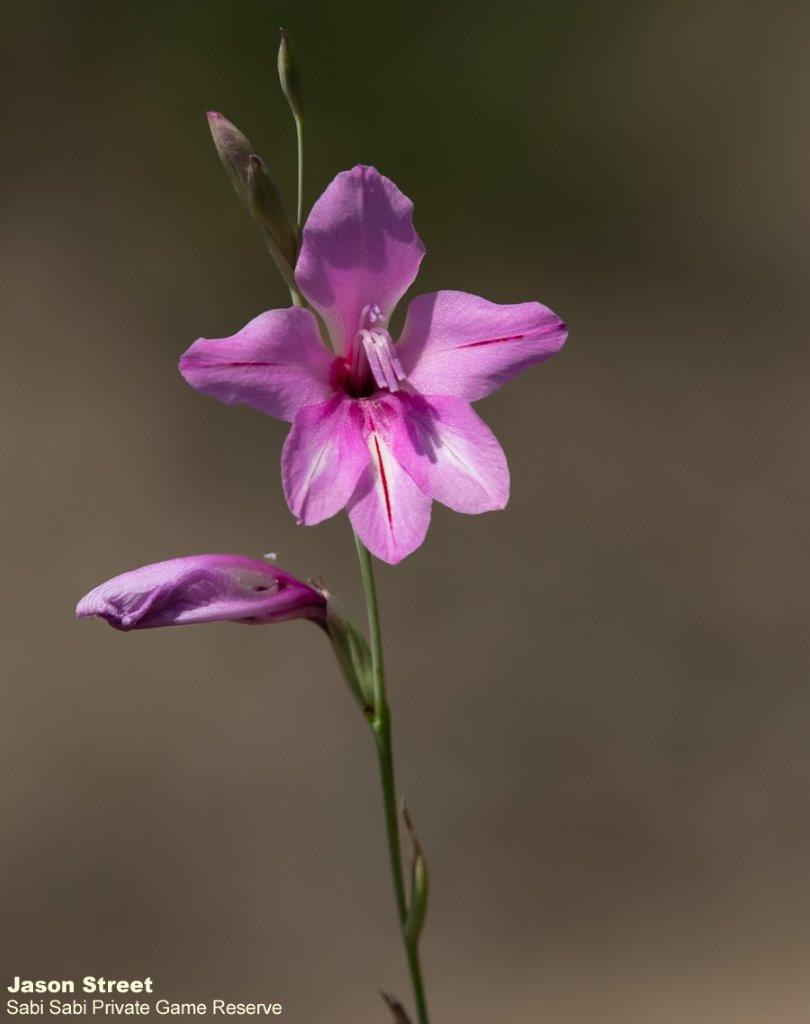
Gladiolus is a genus of perennial corms flowering plants in the iris family. This species was originally only pollinated by long-tongued antithophorini bees, but some changes in their pollination system have occurred and opened them up to being pollinated by sunbirds, hawk moths, long-tongued flies and several other species.
There are many more flower species you could come across during your stay at Sabi Sabi, in fact the Lowveld region of South Africa is home to more than 4500 different species. The flowers mentioned above are some of my favourites. Come join us on safari at Sabi Sabi and let's find your favourite.

